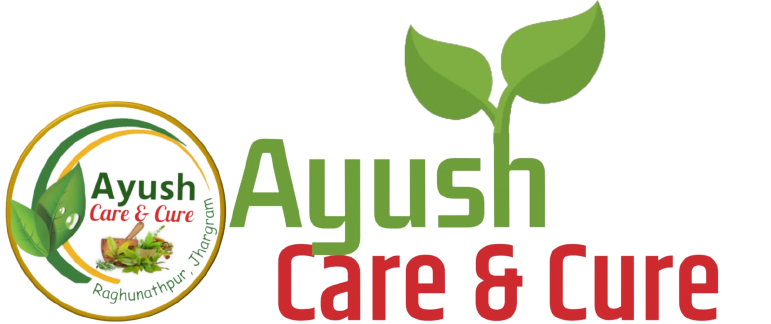spermatorrhea in Ayurveda
The Ayurvedic tradition addresses spermatorrhea as a recognized condition, often referred to by terms such as Shukrameha, Dhatu Roga, Dhatu Dosha, or Dhatu Syndrome. This condition is viewed not merely as a physical symptom but as a sign of deeper systemic imbalance within the body’s vital energies and tissues.
Ayurvedic Definition and Classification
Spermatorrhea (Shukrameha) is characterized by the involuntary discharge of semen, even in the absence of sexual activity, which may occur while the patient is awake, asleep, or dreaming, or when semen flows with stool, urine, or sensual thoughts.
- Prameha Classification: Shukrameha (Shukra = Sperm + Meha = Passage in urine) is considered one of the twenty types of Prameha (urinary disorders) described in Ayurveda.
- Shukrameha Symptoms: In this condition, patients pass urine that resembles the quality of semen, or semen itself may be mixed with the urine. It is generally categorized as a Kaphaja Prameha (a type caused primarily by Kapha morbidity).
Etiopathogenesis in Ayurveda
Ayurveda attributes spermatorrhea to specific imbalances in the Doshas (energies) and the depletion of vital essences and reproductive tissue.
- Vata Dosha and Apana Vayu: The primary cause is often linked to the disruption of Vata dosha, particularly Apana Vayu, the downward-moving energy that governs reproductive and eliminative functions. Aggravation of Vata, stemming from factors like excessive physical and mental activity, anxiety, or irregular routines, can dry out tissues and weaken reproductive health.
- Shukra Dhatu and Ojas Depletion: The condition is rooted in a depletion or weakening of Shukra Dhatu (reproductive tissue). Shukra Dhatu is the most refined of the Sapta Dhatus (seven tissue systems) and holds the essence of all the other dhatus. Shukra provides essential qualities like endurance (Dhairya), strength (Bala), happiness (Prasannata), and the seed (Bija) for procreation. The depletion of Ojas (vital essence or vigor) is closely tied to semen health and contributes to the pathogenesis.
- Agni and Toxins: A weak Agni (digestive fire) leads to the accumulation of toxins (Ama), which disrupts the natural nourishment process of the Shukra Dhatu.
- Folk/Culture-Bound Concerns: In the context of “Dhat syndrome,” the patient’s condition is often associated with intense anxiety and dysphoria stemming from the traditional Hindu spiritual belief that semen is a “vital fluid”. Patients frequently ascribe their semen misfortune to factors like excessive masturbation, sensual dreams, and unreasonable sexual longing.
Symptoms and Complications
Patients diagnosed with spermatorrhea or Shukrakshaya (depletion of Shukra) may present with numerous physical and mental symptoms:
- Sexual/Urinary Symptoms: Involuntary semen discharge, nocturnal emissions (nightfall), premature ejaculation, and a flat penis.
- Physical Debility: Weakness, sluggishness, low energy, dizziness, severe or moderate back pain, and loss of appetite (Anorexia).
- Mental/Nervous Symptoms: Insomnia (loss of sleep), rapid or abnormal heart rate (palpitation), loss of concentration, anxiety, and depression.
- Complications: Unattended Prameha (including Shukrameha) may ultimately lead to Madhumeha (Diabetes Mellitus), and the qualitative and quantitative vitiation of Shukra Dhatu results in infertility (Santanhinata).
Ayurvedic Treatment Modalities
Ayurvedic treatment aims to restore the balance of doshas and regenerate the reproductive tissues using a holistic approach involving herbs, specific detoxification procedures (Panchakarma), and lifestyle modification.
1. Herbal Remedies (Vajikarana)
Treatment involves Vajikaran (Vrishya chikitsa), a specialty of Ayurveda concerned with aphrodisiacs and virility, which aims to revitalize all seven dhatus and enhance sexual function.
2. Panchakarma Therapies
Panchakarma is employed for chronic cases to eliminate toxins (Ama) and correct Vata imbalances.
- Basti (Medicated Enema): This therapy is crucial as it balances Apana Vayu, the downward Vata energy considered the root cause of semen loss, and strengthens pelvic nerves.
- Virechana (Purgation): Clears excess Pitta and toxins from the liver and is used for heat-related symptoms like inflammation.
- Nasya (Nasal Therapy): Medicated oil drops are administered to the nostrils to relieve stress and hormonal imbalances by clearing energy channels in the head.
3. Specialized Treatments
- Uttar-Basti: This special treatment, involving the intra-urethral application of sterilized medicated oil or ghee (such as Bala-Ashwagandh Tail), is specifically cited as a remedy that destroys spermatorrhea (Shukrotseka).
4. Lifestyle and Diet
Diet is considered the cornerstone of healing, aimed at calming the mind and strengthening digestion (Agni).
- Dietary Recommendations: A Sattvic diet is preferred, emphasizing warm, cooked, fresh, organic, and easy-to-digest foods. Recommended foods include warm milk with herbs, ghee, almonds, dates, and whole grains to nourish Shukra Dhatu.
- Foods to Avoid: Cold and raw foods, spicy, salty, and sour foods, red meat, caffeine, and alcohol should be avoided as they weaken Agni or aggravate Vata.
- Yoga and Pranayama: Practices such as Mula Bandha (Root Lock) and Ashwini Mudra (Horse Gesture) are recommended to strengthen the pelvic floor muscles and redirect Apana Vayu upward, which helps in seminal retention. Bhramari Pranayama (Bee Breath) is used to calm the mind and reduce stress, a major trigger for semen loss.
